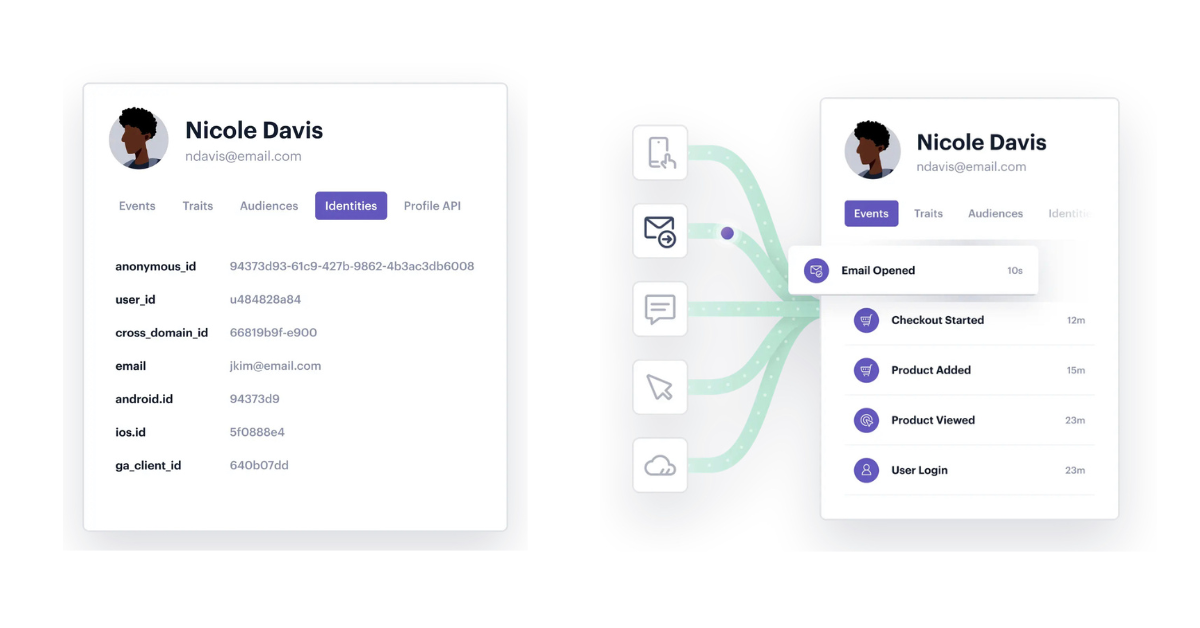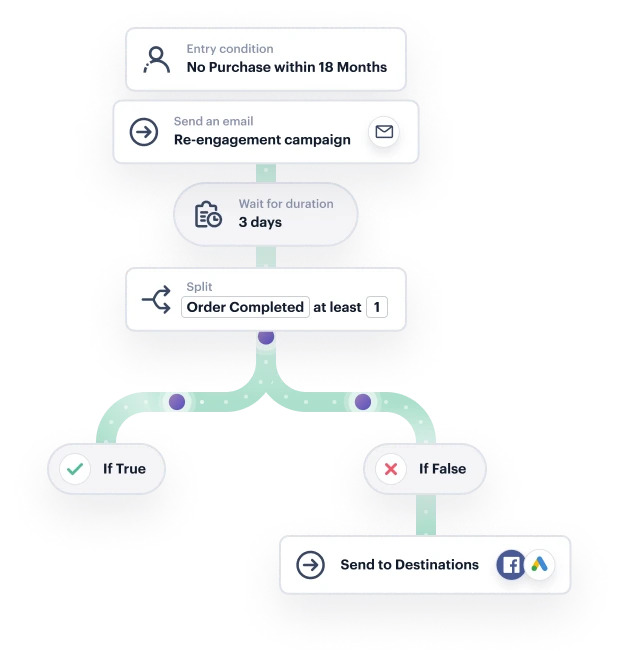First-party data is collected directly from users when they interact with your business (e.g., on your website, app, or other owned channels). It’s an essential asset for companies to understand their audience, personalize experiences, and make better business decisions. And it can be collected in a variety of ways, as we outline below.
How to collect first-party data
Every interaction a person has with your brand presents an opportunity to learn more about their behavior and interests. Everything from their propensity to buy to their predicted lifetime value can be gleaned from first-party data.
Common opportunities for collecting first-party data include:
-
Website behavior (e.g., browsing your website, feature use, searches, transactional data)
-
Open, click, and engagement rates from email campaigns
-
SMS and text message open and response rates
-
Offline survey and feedback forms
-
Point-of-sale customer interactions, such as signups for loyalty clubs or demographic data
-
Mobile app engagement, including downloads, opens, time spent in-app, and purchase history
Often, marketing teams are working with various different tools that provide analytics on things like email open rates (e.g., SendGrid) or page views (e.g., Google Analytics). But these data points can easily be trapped in the tools that log them, creating silos. It’s essential that businesses consolidate their first-party data for a complete view of the customer journey.
Other ways first-party data can be collected include real-time event streaming, JavaScript, APIs, SDKs, and even surveys or polls (which in more recent times may be referred to as zero-party data).
Tools for data collection
Commonly used tools for data collection include:
-
Advertising: Facebook Ads, Google Adwords, LinkedIn Ads, etc.
-
Analytics: Google Analytics 4, Mixpanel, etc.
-
Email Marketing: SendGrid, Marketo, etc.
-
Surveys: Jebbit, Qualtrics, etc.
-
With Segment Connections, you can easily integrate all these tools into your tech stack, to consolidate data in a central repository, and then send data to downstream destinations for activation or analysis.
Best practices for first-party data collection
There are a few best practices to follow when collecting customer data: only collect what you need, always have user consent, and make sure there are proper protections in place to keep data secure and compliant.
1. Obtain user consent to collect data
There are both legal and ethical considerations to take when collecting customer data, like obtaining user consent.
Consent management is the process of informing users how your business will collect and use their data, providing the opportunity for anyone to accept or decline. Many regulations now require users to opt in to being tracked or having their data collected, whereas in the past it was an opt out setup. (Apple’s App Tracking Transparency is an example of this trend.)
At Segment, we also recommend only collecting data that is necessary for your business to stay compliant and maintain user trust.
2. Use a universal tracking plan
Organizations need to have internal alignment about what data they plan to track, the reason for collecting this data, and where they’re tracking it. In other words, they need to have a well-defined data tracking plan.
These tracking plans are essential for having complete clarity on everything from naming conventions to how you’re maintaining compliance.
What you plan to track will vary depending on your business. At Segment, we recommend thinking of how different events will tie into key performance metrics (KPIs) to help drill down to what should be tracked. A simple example of this can be tracking churn rates as a way to understand what’s driving or hindering customer retention.
At Segment, we also offer several tracking specs to help get teams started, for industries like B2B SaaS, e-commerce, and more.
3. Implement proper security controls
Organizations have to ensure that they’re properly protecting customer data – not only to avoid legal hot water, but to maintain trust in their organization. There are several ways to protect first-party data, ranging from:
-
Encrypting data at rest and in transit
-
Implementing role-based access controls
-
Single Sign-On (SSO) and Multi-Factor Authentication
How to use first-party data
There are almost unlimited ways to put your first-party data to work in your organization. Before using it to make informed business decisions, consider your priorities.
1. Aggregate data into a unified customer profile
Collecting customer data is the first step. Attributing data points to each individual is another matter entirely – and it can quickly get complex. How do you track users as they switch between devices and channels? How do you stitch together anonymous user behavior with a known profile, once that person enters your database?
Identity-resolved customer profiles are at the heart of personalized marketing. But building these profiles can sometimes take years due to their complexity. With Segment, businesses can leverage deterministic identity resolution to merge complete customer histories into a single profile. This profile can then be synced with the data warehouse for further enrichment, and activated in any downstream destination.


